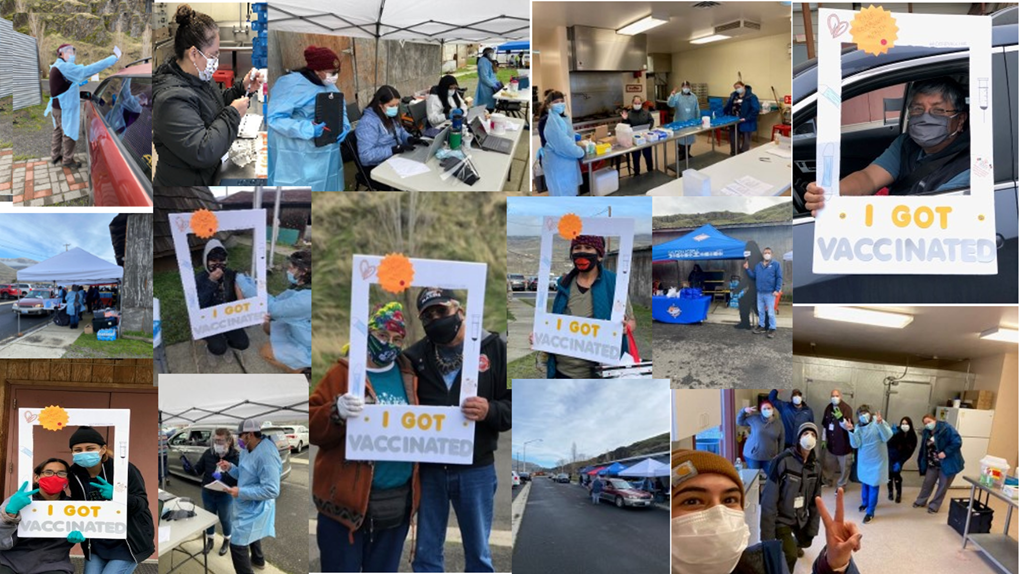“Our Longhouse is a place of worship, and we haven’t been able to use it during COVID,” says Karen Whitford, a Tribal Elder who lives 12 miles east of the Dalles in Celilo Village. On Jan. 27, after a ceremonial prayer, Whitford and 103 Tribal members from throughout the Columbia River Gorge received first doses of the COVID-19 vaccine at the Longhouse.
It was a vaccination event that required collaboration between two states, four counties, the Intertribal Fish Commission, social service agencies and transportation partners. Leading the effort was one of the Oregon Health Authority’s partners, One Community Health (OCH), based in Hood River and The Dalles.
“We advance health and social justice to all in our community regardless of the ability to pay,” says CEO Max Janasik. They offer medical, behavioral health and dental services, as well as education and outreach to seasonal farm workers, Tribal members and others.
Gladys Rivera, preventative health manager, led the effort to vaccinate Tribal members who would have struggled to access vaccines. Many live at Tribal fishing sites, often hours away from the nearest Indian Health Services clinic, with limited or no access to running water, electricity, cell phones or other basic needs.
OCH sent three community health workers and a nurse who lives in one of the villages to 16 sites along the Columbia River to register Tribal members. This meant knocking door-to-door, gathering people’s information, scheduling an appointment and arranging transportation. Over four days they registered 104 Tribal members.
“That is what equitable access should look like,” Rivera says. “We can’t expect people to come to us. We need to go to them. My favorite part has been establishing that rapport and trust. To be invited to their home and provide that service there hasn’t happened before.”
“We like to make the Longhouse useful,” says Whitford. She and many other Tribal members have now had second doses. She lost her nephew to COVID-19 and her husband is still suffering its aftereffects. That day, watching people arrive in their cars to be vaccinated, she says, “It was happy heartbreak, seeing who was alive and who wasn’t.” She is still being very cautious, but now, she says, “I feel safe.”

Johnson & Johnson vaccine: An important tool in our toolbox
As vaccination scales up, so does our nation’s overall protection from serious outcomes due to COVID-19. Oregon has given over 1 million doses of COVID-19 vaccine to people in Oregon, and now we have begun to receive doses of a third vaccine.
“The Johnson & Johnson vaccine, which recently received Emergency Use Authorization (EUA) in the United States, began arriving in Oregon this week, and has been shown to be safe and effective in preventing severe COVID-19 illness, hospitalization and death. In clinical trials, no one who received this vaccine was hospitalized for COVID-19 and there were no COVID-19 related deaths among those vaccinated.
One of the advantages of the Johnson & Johnson vaccine is that it only requires one dose. People will not have to return for a second dose to be protected. In addition, this vaccine does not need to be kept in a freezer and can be stored at refrigerated temperatures, making it easy to transport and store. It also allows for expanded availability in most community settings and mobile sites as supply scales up.
This third safe, effective COVID-19 vaccine comes at a potentially pivotal time. Oregon is moving quickly to vaccinate our older population. Group 6 of Phase 1B will begin vaccinations no later than March 29.
This vaccine is another important tool in our toolbox to equitably vaccinate as many people as possible, as quickly as possible.



.png)